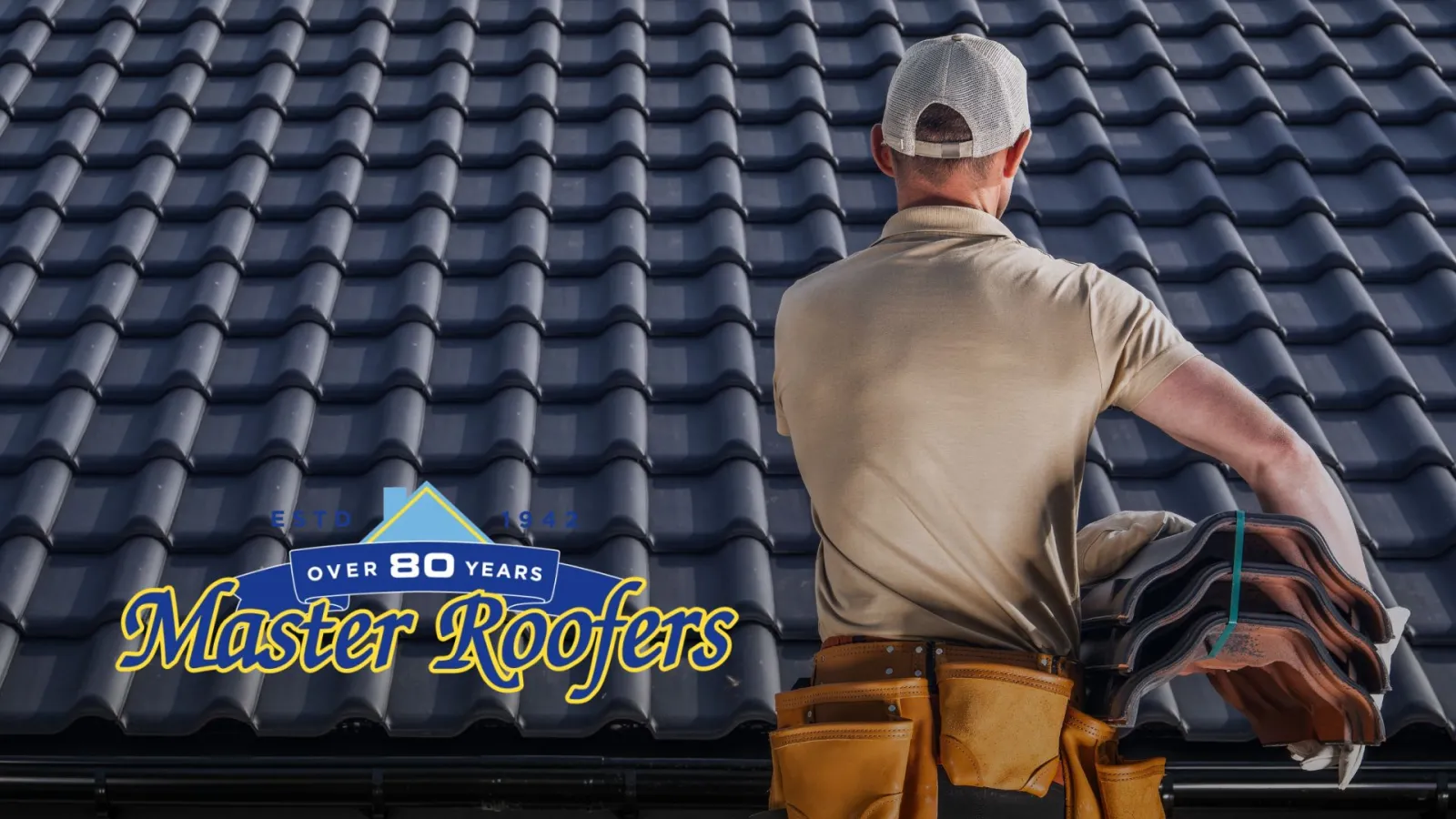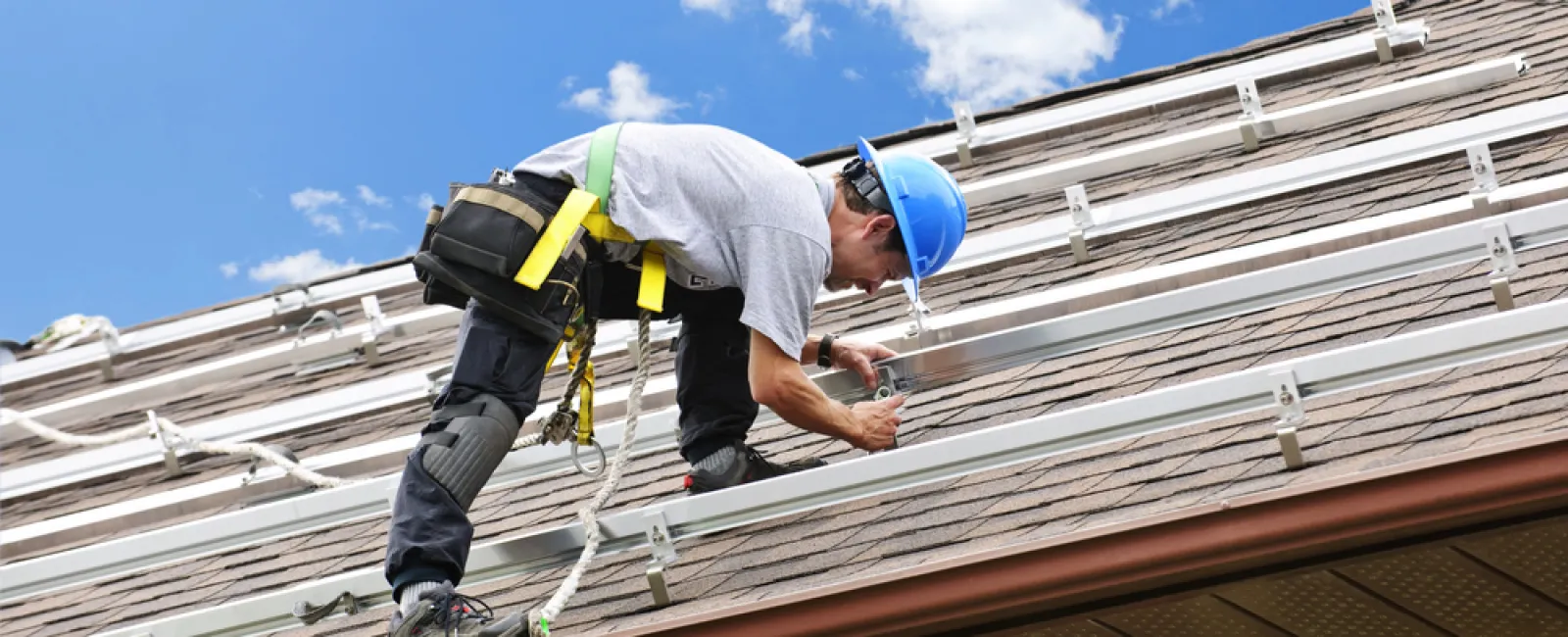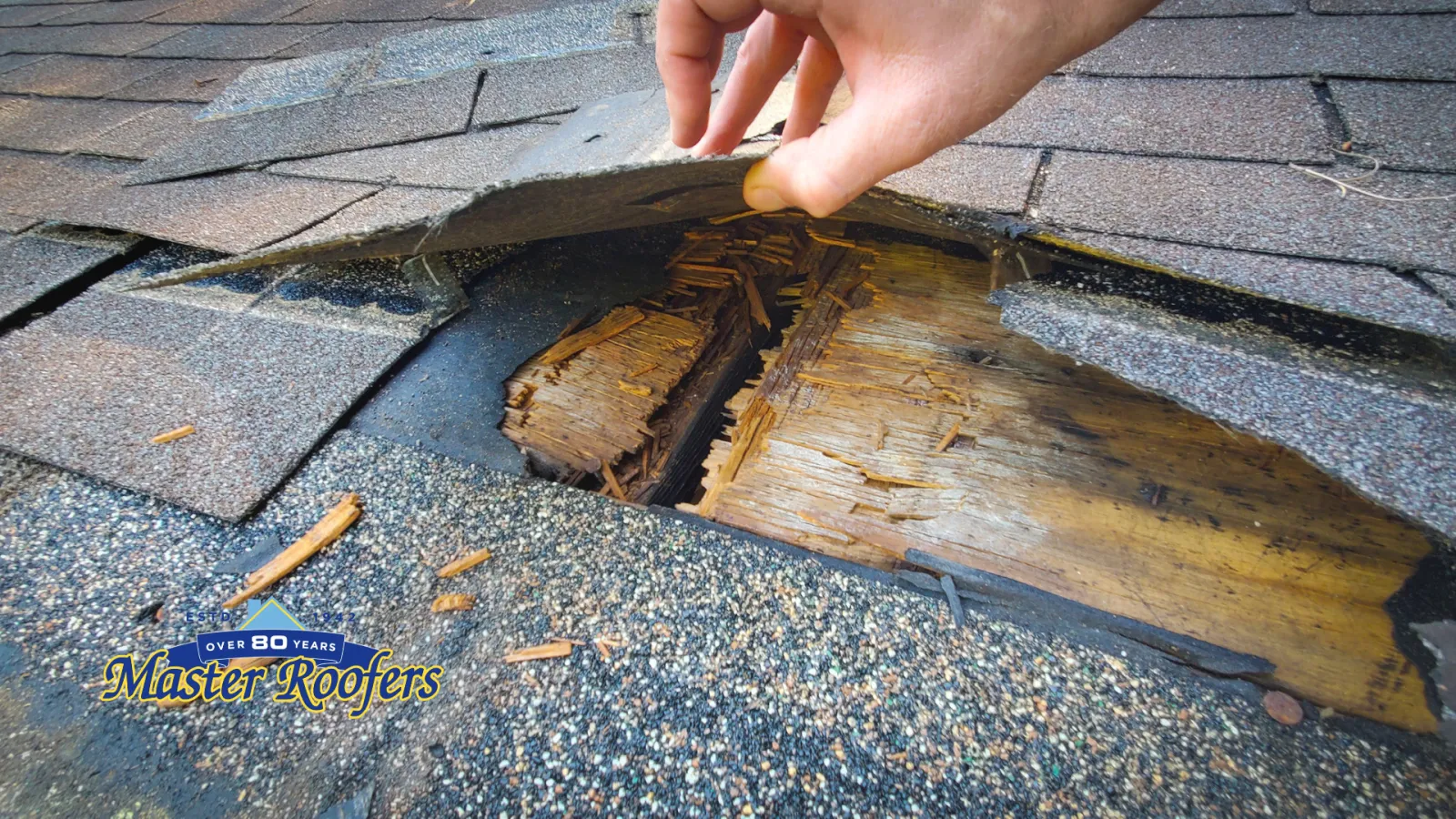In this episode, John Maher chats with Brett Rogenski, general manager of Master Roofers, about the most common roofing myths. Brett dispels misconceptions such as "all roofs are the same" and explains the importance of proper roofing materials, installation, and ventilation for the longevity of your roof. He discusses various roofing options like asphalt shingles, slate, and standing seam metal, and highlights the need for professional inspections to prevent issues like degranulation, curling, and moss growth. For accurate advice and solutions, Brett emphasizes the importance of working with a reputable roofing company like Master Roofers.
John Maher: Hi, I'm John Maher, and I'm here
today with Brett Rogenski, general manager of Master Roofers, the most trusted
roofing company in New Hampshire for over 80 years. Today we're talking about
roofing myths. Welcome, Brett.
Brett Rogenski: Hey, thank you, John. I
appreciate you having me.
What are Some Common Myths Associated
with Roofing?

Maher: Sure. So, Brett, what are some of
the most common roofing myths that you encounter as a roofing professional?
Rogenski: Gosh, there's a lot of them. And
you know what, we really don't blame homeowners for that because how many
people really know much about roofing and the roof and how it went down. Most
of us, a lot of us have never bought a roof in our lifetime, and I think the
average consumer owner only ever buys one I think it's statistically the
average. So yeah, we're all not roofing professionals. That's our job. That's
why you work with a company like us.
So, I would tell you, the most
prevalent myth is one, and you could say it goes back to estimation and
shopping is, all roofs are the same, okay? If I'm thinking about a traditional
home with a shingled roof, they're all pretty much the same. Just go with the
cheap roof, right, because the materials… Shingles the shingle, what goes on
under, isn't that the only thing up there, or what goes on under the shingle
must all be the same?
And I guess why I would tell you,
the biggest misconception is that, I guess I would tell you, it's not 1952
anymore. It's not tar paper under there and some asphalt shingles on top and
away we go and is kind of all the same. Every manufacturer has different lines
of shingles that are appropriate for different, number one, different types of
surfaces, and also number two, different homeowner needs or desires. And then
the really super important part is what's going on under the shingles as well.
So, the assembly system, the things that are going to ensure that your attic
and your home breathe and all those things.
So, a roof isn't just a roof and
go with the cheap guy because they're all the same. That would be kind of like
saying, well, just buy the cheapest used car that you can find because they're
all the same. That's not quite true. There's a lot more to it than that.
Talk About Roofing Materials
Maher: So, can you talk a little bit
about roofing materials and explain what types of roofing materials are
available and whether they're suitable for various climates or different types
of homes?
Rogenski: Sure. Yeah, I mean, I guess I
would tell you, a roofing system kind of starts with what we call
underlayments, which are the things that go between the roof and then the
roofing material. There's a whole variety of different things there and
different classes of them from being very inexpensive and not very good to
being a little larger investment, but providing a different experience. The
next thing that's typical to any roof is ice and water shield. So, ice shield
in the northeast here, that's something that's very typical for us.
Then we get into what's going on
top of it. Well, there's a lot of different options. There's asphalt shingles
of which every manufacturer makes different grades. Some of them are less
expensive because they're not as robust a product. Some of them are more. So,
there's something for every budget. There's also, you can get away from that,
you can get into slate. You can also get into standing seam metal.
So, there's a whole variety of
different things. I would tell you, the most common by far is asphalt shingles.
And asphalt shingles kind of break down into a couple of segments, largely it's
what's called three-tab, which is kind of a standard old shingle that most of
us saw. And then architectural shingles, which are actually a laminated product
that's more robust. It also allows the manufacturer to do different things to
make it, I guess I would tell you, make it look a little prettier as well. But so,
asphalt shingles are definitely the most common that's going over, but
everything has its place.
Slate is a wonderful product.
Cedar is a wonderful product. It's just not appropriate for every situation.
Standing seam metal is popular and becoming even more popular. A lot of times
we see that on commercial structures, but people do that on their homes as
well, especially in areas with heavy snow loads. One of the beauties of
standing seam metal is it's essentially impermeable. You're going to put that
roof up there, and 50 years from now, it should be as tight as it was the day
that we put it on, as long as it hasn't been damaged and it was, of course,
installed properly.
Another thing that people don't
necessarily think about and they need to with roofing is ventilation. There's a
whole second side to your roof. There's the side that we all see, which is the
shingles or standing seam. Well, guess what? Go up in your attic, that's the
other side of your roof is that plywood and all the other stuff. And proper
ventilation, or better said, improper ventilation is number one potentially
even dangerous for the homeowner because you can have mold, mildew, all these
other things, but it's also detrimental to the life of the roof as well.
So again, that second side of the
roof, the part that most of us don't think about up in the attic, if that attic
is not properly ventilated through ridge vent or gable end vents, whichever
we're doing, we do a lot of ridge vent, it's going to lessen the life of the
roof and also be a worse experience for the customer potentially in terms of
home health.
Is One Type of Roofing
Material Better Than Others?
Maher: Okay. And so is one particular
type of roofing material better for the climate here in New England than
another, or do they all work pretty well?
Rogenski: I would tell you that they all
have a proper place. It's kind of like anything. You just want to get the
proper product, and sometimes there's more than one solution that's appropriate
to a home. If you take money out of it, but let's face it, money is a real
thing, if you take money out of it, there's a lot of options that can work on
different homes, but most people don't want to pay significantly more for a
roof to do it as a standing seam metal roof versus, say, an architectural
shingle roof.
So, I would tell you, again, here
in New England, by far the most common residential roof is an asphalt shingle
roof that is architectural shingles, and there's a lot of really great products
out there. Again, that can have warranties of up to 50 years if they're done by
a certified contractor such as ourselves that they're willing to warrant that
roof for up to 50 years on that product, which is really amazing.
Does the Color of Shingles
Impact the Home?
Maher: Talking about myths, I know that
some people believe that one color versus another color of shingles affects
their home and maybe the energy efficiency of their home. Lighter roofs might
reflect the sun more, so they might be better in the summer and not let as much
heat in. But on the other hand, in the winter, darker shingles might allow more
sun to hit the roof and warm up the home. Are lighter and darker shingles, does
that actually affect the energy efficiency of your home? And if so, which one do
we prefer generally here in New England?
Rogenski: Sure. You know what, in general,
there's not actually a huge amount of difference. If you go back to that whole
discussion that we had about ventilation, so if an attic or whatever the space
beneath that roof is properly ventilated, there's not a lot of difference. Yes,
a very dark shingle on a very sun exposed roof will build up some heat faster
than a much lighter colored shingle on that same roof. But if that attic that
is above those is properly ventilated, the difference is nominal, and it's really
not lengthening or shortening the shingle life at this point.
That used to be true more so many
years ago, but the manufacturers, especially when you're talking about
architectural shingles, which are a laminated, multilayered product now. Old
shingles used to be pretty much asphalt granules, a little bit of... there was
like a matting in there, and they were more susceptible to heat damage. Current
ones based on the color of the shingle, not so much. You're more likely to
damage a roof of any type by having it being improperly vented. Now you're
cooking it from the top, sunlight, and from the bottom, the inside. So if that
attic space is not properly vented, you're going to do more damage than the
difference between a light gray shingle and a dark black shingle That's going
to be a lot different.
So as long as it's being installed
properly, the difference is so marginal, I would tell you, it's not worth that.
I tell homeowners, choose what you think would look really great, and in a case
like us where we're going to ensure proper ventilation, hey, go with what makes
you happy, what makes it look good to you, and you're not going to have a
problem because we're going to ventilate that area properly.
Should Homeowners Inspect
their Roofs Regularly?
Maher: Right. Most homeowners can
probably go months or years without even hardly looking at their roof. Is that
something that homeowners should be doing on a regular basis, inspecting their
roofs or calling a professional to come in and inspect their roof and just make
sure that it's in good shape? And if so, how often should they be doing that?
Rogenski: Sure. Great question. Yeah,
you're right. Most homeowners, I would tell you, most homeowners have never
been on the roof, nor do they want to, right?
Maher: Sure.
Rogenski: We all have different things
that we do. So, Mr. Smith might be really great at something, but climbing up
on his roof probably might not be his deal, and that's great. So yeah, I would
tell you, if someone's capable and can safely perform an inspection of their
roof, it's good to get up there and just give it a visual inspection every year
or two years.
I would tell you, most homeowners,
we really don't suggest that because they're not going to be able to do that in
a safe manner. We don't want someone getting hurt going up and look at. So
yeah, you can call a professional roofing company such as Master Roofers. There
are also some home inspection companies that offer the service as well.
And I would tell you, if no one's
been on your roof in five years, give a call, it's very inexpensive, and have
someone come out and just take a look at that roof. And really at that point,
if it's a newer roof... So, let's say you put it on five years ago, no one's
been there since and that sort of thing, we're really looking for physical
damage and proper installation. Are you having issues because it was not
installed properly? Meaning do you have shingles breaking loose because they
didn't use the nailing strip? What are you having going on there? We can help
you with that. Did you suffer damage, a limb, hit your roof and you thought
everything was fine, and it turns out it's not?
But we're happy to do those sort
of things, and we're just as happy, and quite frankly, we're happiest when we
can jump up there and go, "Yeah, everything looks awesome. Geeze, John,
your roof, it looks like it's in great shape, it was installed well, and we see
no damage unless something happens, give us a call again in five years."
So that's really what we like to do.
But by the same token, just like
maintaining your car, having that inspection done is pretty cheap insurance
against something larger. Unfortunately, we've had to respond to inspections
like that only to find out that whoever installed the roof didn't do it
properly, and now there is damage that's occurring. It's a lot easier to fix it
when it's small than when of a sudden now it's raining in your dining room.
Are there Obvious Signs of
Roof Damage?
Maher: Right. Are there obvious signs
of roof damage that a homeowner could kind of look up on their roof maybe not
necessarily without getting up on top of the roof, but just looking up? Are
there obvious signs of damage that a homeowner could take a look at and say,
"Oh, yeah, I need to have a professional come out and check this
out"?
Rogenski: Absolutely. There's some stuff
that, like you say, if you can get a fairly good look at it. Are you having
curling? Are your shingles starting to curl? That's typically a sign of
excessive heat, so there's probably an air flow problem probably in your attic,
but have someone there and look at, but if you see curling, cupping, not good,
have someone get there and look at because it's also not going to fix itself.
Maher: Yes, you want it to be nice and
flat.
Rogenski: Yeah, they want to just lay
there nice and flat Degranulation, so the pebbles that are on a shingle, some
of them by nature just come off number one, over time, and number two, from the
manufacturing process. Initially when you put it on, there's some that just
come off, they're not well adhered. That's okay, that's normal, that's not
something you're worried about.
But if all of a sudden, you're
starting to see thin or bare spots on your shingles, spots where you can see
that there's less granules or you're looking at the runoff out of your gutter
if you have them and all of a sudden you're like, "Why do I have this
giant pile of sand coming out of my gutter?" That's definitely something
that you should probably have someone come and inspect.
Why is the degranulation
occurring? May have been an inexpensive shingle that's not holding up well,
maybe a manufacturer's defect, in which case that's where that warranty comes
into play and holding whoever the manufacturer is accountable, and they want to
be held accountable to that. They don't want to have a bad name out there.
So, I would tell you, cupping,
degranulation, and then also where sometimes you can see, maybe it's not your
home, but you've driven by a home where the shingles used to be nice and
rectangles and the edges were fairly well-defined, and now all of a sudden,
they're literally wearing down, so none of these things are no longer
rectangles, the edges of our... That's actually the asphalt itself and the
matting deteriorating, very bad sign. Yeah, you definitely want to do something
about that.
And I guess probably the last
thing is, do you have loose shingles? Is there something that's not lining up
with the other ones? Meaning has it come loose? Do you have multiple that are
loose, because that shouldn't happen at all? So that was either mis-nailed or
maybe it was damaged by storm damage or something like that. There can be a
variety of reasons, but they should all continue to line up for the life of
that roof just fine. You shouldn't have one that's hanging down differently
than the others and that sort of thing. So, they should be laying there nice,
flat, and straight.
Is Having Moss Growing on
Your Roof a Problem?
Maher: What about things like moss
starting to grow on your roof, on your shingles? Is that a bad sign that it's
retaining moisture or something like that?
Rogenski: Yeah, that's actually a really
good point, John. And every situation is a little bit different kind of
depending on your surroundings because you're surrounded by trees, are you
surrounded by nothing, are you surrounded by pine trees and you're building
pine thatch? But yeah, if you are starting to see moss, actual moss building on
there, that definitely should be addressed. And there's a lot of different ways
to address that.
Unfortunately, we've seen folks
who decide that they can fix it themselves and they hop up there with the
pressure washer and blow the moss off. The problem with that is they're being a
little too aggressive and they're deteriorating their shingles while they're at
it. So they got rid of the moss. They also got rid of a lot of the granules and
the matting, and there's really starting to take that thing apart. So yeah,
moss is a bad sign. That can be treated chemically, and frankly, we usually
just gently, we have some tools that we do it with, can gently scrape it out of
there.
In homes, I had a home in New
Hampshire that accumulated a lot of pine straw. I was surrounded by pine trees.
That would build up, and I would have... Number one, it actually caused me a
few issues with backing up water by one of my Skylights. Wasn't anything wrong
with the Skylight, it was the accumulation of pine straw. But also you can get
growth in there.
So, a lot of times, if you're in
an area that accumulates a lot of pine straw, might be a great idea to, once a
year, have someone get up there and gently and professionally remove that pine
straw so that nothing good's going to come from that. But yes, moss is a bad
sign and you want to get rid of it because it's going to start to make those
actual shingles deteriorate as its little fibrous roots go into them.
Maher: Okay. All right. That's really
great information, Brett. Thanks again for speaking with me today.
Rogenski: Thanks, John. I appreciate you
having me.
More Information About Master
Roofers
Maher: And for more information, you
can visit the website at masterroofers.com or call (603)-623-4973.


